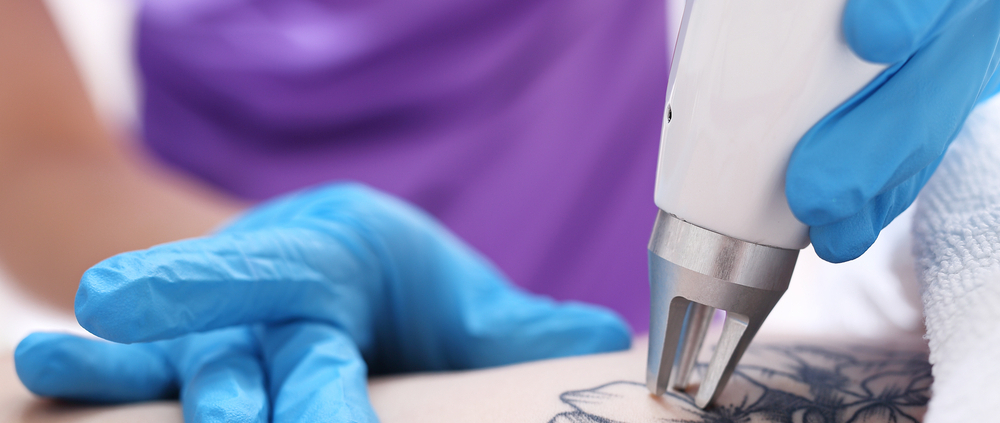What Is The Best Method For Removing Tattoos?
People say all the time that a tattoo is a lifelong decision, so you want to make sure that you truly like the idea of having one before you get inked. Yet, once you get it, you might have some regrets. Maybe the tattoo didn’t live up to your expectations or the artwork isn’t a masterpiece. Perhaps the ink is blurred or faded or you develop an allergic reaction. Whatever the reason, tattoos can be removed with a couple of methods—laser removal, creams, surgery, dermabrasion, and so on.
Today we’re going to discuss some options for tattoo removal, including which method is the best.
Why Are Tattoos Permanent?
Tattoos are made to last. The reason tattoos stay with you for a lifetime is because of where the ink is deposited—in the dermis, the inner layer of your skin. When ink particles are injected into the dermis, they are immune to absorption and cell regeneration. Interestingly, there is an immune response when ink is placed in the dermis, but the particles are often too large for the cells to process. Because of that, the skin heals around the ink particles, locking them in place.
What Are Methods of Tattoo Removal?
Cultures throughout the world have been tattooing images into their skin for centuries. Tattoo removal hasn’t always been as prevalent or as medically or technologically advanced as it is today, and there are more options available than ever before.
Let’s have a look at some of the common methods so you can compare each one to see which one might work best for you.
Salabrasion
For salabrasion, a professional uses water, salt, and something abrasive to remove the tattoo. A local anesthetic is often needed to lessen the pain. The tattoo is treated with a mixture of water and salt then rubber with the abrasive device until the tattoo is gone. After the session, which usually takes around 30 minutes, an ointment is applied to accelerate healing and stop infections. While the area heals, you wrap it in gauze.
This is the oldest method of tattoo removal, making it a cost-efficient practice. The downside is that salabrasion may cause scarring and skin damage.
Dermabrasion
More advanced than the traditional salabrasion method, dermabrasion utilizes a grinding device, such as a diamond fraise or wire brush, to remove the outer layers of your skin. The ink particles are gradually exposed then removed. With dermabrasion, you will need to recover for nearly a week, and the skin may scar and darken after it has healed.
Removal Creams
Many people find that applying a tattoo removal cream is a less painful option, though it is slightly more expensive. You can choose from a variety of creams, depending on where you are located. However, there is one caveat: while tattoos do fade with these creams, they don’t vanish entirely. You’re left with a distorted version of the original artwork. Furthermore, these removal creams contain chemicals that may exacerbate skin conditions or cause allergic reactions.
Solution Injections
You can opt to have a glycolic acid solution injected into the dermis. The acid-based solution can alter the chemistry of the tattoo ink, causing the pigments to fade.
The downside to this kind of tattoo removal is the long term scarring or unwanted discoloration that is left behind.
Laser Removal
The preferred method of tattoo removal is with laser treatments. Safe and effective, laser removal causes far less side effects. You can get your tattoo removed over time, with little to no darkening, scarring, or lingering color.
If you want to thoroughly get rid of a tattoo, then you should opt for laser tattoo removal.
Why Is Laser Tattoo Removal The Best?
You don’t want a nasty scar or discoloration after moving a tattoo that you’re not proud of owning. You don’t want to remember it. In that case, laser tattoo removal is your best bet. The method uses a laser to target the ink in the dermis. Pigments get broken down by the laser so that the immune system can flush them out over time.
How Does Laser Tattoo Removal Work?
As mentioned earlier, tattoos are permanent because of their location in the dermis and the size of the ink particles. Lasers slowly break down the ink that is in the skin, enabling white blood cells to digest the particles. How does that happen? The lasers target the ink, heating it up and making the particles expand. At the same time, the laser has to zap the ink particle so quickly that only a portion of the pigment gets hot enough to separate from the cool side.
A special laser machine is required to get this energy transference just right. Q-switched lasers can release energy in a single pulse and are the chosen device for removing tattoos. There is even one called the Q-switched Nd:YAG, which is available for darker skin tones to prevent a lightening of the skin after treatment.
Once you have had a laser tattoo removal session, the real work is done by the body. Having your tattoo removed with lasers is a long-term commitment. Usually, you need 5-10 treatments to completely dissolve a tattoo; that could mean 2 years or longer!
Who is a Candidate for Laser Tattoo Removal?
There are some factors that go into deciding which tattoo can be removed by lasers, such as the age of the tattoo, ink density, colors, and location. Older tattoos are the best for laser tattoo removal, since the ink particles have been weakened with age and will break apart more easily. Darker colors, like black and navy blue, are easier to remove than lighter colors, since they can absorb more light.
Surprisingly, your skin type is also considered. People with darker skin have more melanin, meaning that certain inks can’t be targeted by the laser. Black inks are the easiest to treat across skin types, but people with more melanin need to take special precautions before laser tattoo removal.
If you have a skin condition, such as eczema or another disease that affects the skin, like herpes, you may want to discuss options with a doctor, dermatologist, or visit one of the many Philadelphia tattoo shops to see what they recommend. A professional will tell you if you need medications (such as an antiviral) or additional guidance.
Final Thoughts
Tattoos are permanent, meaning that a full tattoo removal is going to be challenging, no matter which removal method you choose. There are several options out there, but each of them may cause discomfort during the procedure or discoloration and scarring afterward. Laser removal is considered the best because you can achieve full tattoo removal over time and less scarring or discoloration. If you’re planning on getting rid of a tattoo, consider laser treatments.



